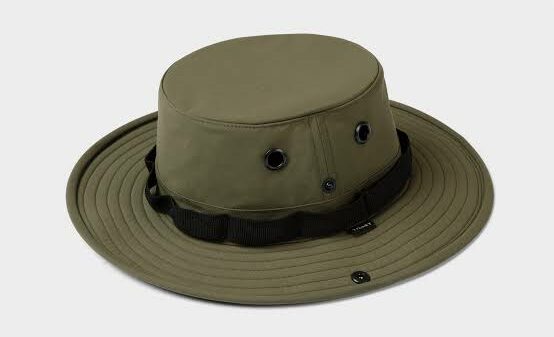Does your dog freak out every time you step out the door? Do they howl excessively, urinate, chew, dig, or try to escape while you are away? Although these problems may indicate that you need to teach polite house manners to your pup, such disruptive and destructive behavior can also be a sign of separation anxiety in dogs. Read on to learn more about separation anxiety in pets and what you can do about it.
What Is Separation Anxiety in Dogs
Separation anxiety usually happens when a dog is super attached to its pet parent and gets stressed when left on its own or when the owner is not around. Many people confuse separation anxiety with mischievous behavior. However, it is important to understand that separation anxiety is more than just a little whining or naughty behavior.
It is a serious condition that puts your furry friends under a lot of stress. Even a fully house-trained and super obedient pup may create problems for the owner when experiencing separation anxiety.
The good news is that there are multiple steps that you can take to elevate separation anxiety in your dog and make your life a bit easier. But before we take a look at different strategies that you can try, first, it is important to understand and identify separation anxiety in your pup. Here are some common symptoms of separation anxiety in dogs.
Signs of Separation Anxiety
Dogs suffering from separation anxiety get super stressed as the owner leaves or is about to leave home. Here is a list of some other symptoms that may indicate separation anxiety in pets.
Barking or Howling
Barking is an expected behavior in dogs. It’s how they express themselves. However, it may be a sign of trouble if your pup barks and howls persistently every time they are separated from you. This kind of howling is generally not triggered by anything.
Chewing & Digging
Destructive behavior, such as chewing and digging, is a telltale sign of separation anxiety in dogs, especially when such behavior occurs in the guardian’s absence. Dogs with separation anxiety often chew on objects, window sills, and door frames. They may also try to dig around or destroy household objects. In addition to property damage, this behavior can also lead to self-injury, including chipped or broken teeth, damaged nails, and scraped paws.
Urinating & Defecating
Another common sign of separation anxiety in dogs is urinating and defecating. If your dog soils the house, make sure you pay attention to when it happens. If your pup urinates or defecates in your presence, then the house soiling problem is likely not related to separation anxiety. On the other hand, if your pup soils only when you are away, it might be a case of separation anxiety.
Escaping
Does your dog keep escaping every time you leave them alone at home? If yes, you may have a separation anxiety problem to address. Dogs that are super attached to their pet parents and get agitated in their absence tend to look for ways to escape when confined alone. They might end up chewing door frames and window sills and getting hurt in the process.
Coprophagia
Separation anxiety may urge your pup to defecate and then consume all or some part of the excrement. If this behavior is triggered by separation anxiety, your dog probably doesn’t defecate or consume it in your presence.
So, Why Is Your Pup Behaving This Way?
That’s one of the most common questions that pet parents of dogs with separation anxiety often ask. The truth is that there is no conclusive evidence showing why pets develop separation. Just like in humans, the reason behind anxiety may vary from one dog to another. However, here is a list of some common situations that are associated with the development of separation anxiety in dogs.
- Change in daily routine or schedule
- Change in residence
- Change in guardian or family
- Absence of a family member
What You Can Do About It
No loving and responsible pet parent wants their pet to suffer through separation anxiety and harming themselves in the process. Here are a few things you can try to alleviate separation anxiety in your pup and help them develop a loving and healthy relationship with you.
Counterconditioning
Counterconditioning is a conditioning process that can help turn your dog’s aggressive, fearful, or anxious behavior into a positive one by associating the disliked situation with something really good. In this case, the disliked situation is the sight of the guardian leaving home or being left alone in the home.
Over time, the dog will learn that being alone means good things for them. To develop this kind of behavior, it is best to leave behind engaging pet toys that will keep your pup busy for hours. You can also hide treats in the toys to make it even more fun for your dog. Make sure to remove these special toys as soon as you return home.
It is a great way to get your pup to enjoy their time alone. However, keep in mind that it usually works only for dogs with mild separation anxiety. A pup with severe separation may refuse to eat in the absence of the owner.
Desensitization & Gradual Habit Forming
Dogs with moderate or severe separation anxiety require more complex and lengthy desensitization and counterconditioning programs. The ultimate goal is to get the pup accustomed to separation slowly. Start with leaving the dog alone for a short burst – no longer than 2 to 5 minutes. Make sure you return before your pup gets fully agitated.
Build their trust slowly until they know you are coming back every time. Gradually increase the time period until your pup becomes comfortable spending time by themselves.
Keep in mind that this is only a short description of the process and is easier said than done. In reality, desensitization and counterconditioning can be tricky. Fear must be avoided at all costs, or else the program may backfire. Always remember to never scold or punish the dog. It will only hamper progress and make things worse.
The Bottom Line: Show Your Pup Some Love!
We all know that a dog is the man’s best friend. So, if your dog is suffering from separation anxiety, it’s time you lend a hand to your friend and help them overcome the anxiety.
While it can be a long journey that requires loads of attention and effort from your side, in the end, it’s always worth it. Moreover, perseverance is the key. Show your pup some extra love and compassion when it comes to addressing separation anxiety in pets. The results might surprise you!
Daniel Alexander is a blogger that has a passion for writing. He publishes content on various topics ranging from tips for event planning and interior designing to technological advancements and financial tips.

















































































































































































